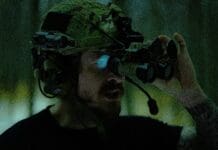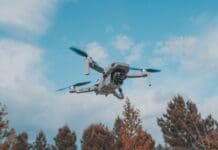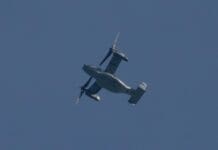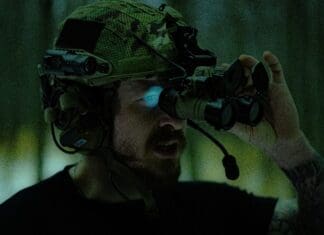
This post is also available in:
 עברית (Hebrew)
עברית (Hebrew)
A logistics unmanned air system (UAS) will execute long-range naval ship-to-ship and ship-to-shore cargo transport missions, replacing tactical aircraft. The Blue Water Maritime Logistics UAS prototype was acquired by the US Naval Air Warfare Center Aircraft Division (NAWCAD) to demonstrate its capabilities at Naval Air Station Patuxent River, Maryland.
Delivered in late October, NAWCAD engineers, testers and military test pilots are now evaluating the commercially procured air vehicle and tailoring it to the Navy requirements.
“This requirement is unlike other cargo requirements that online retailers like Amazon are exploring,” said Blue Water’s project lead, Bill Macchione. “Naval cargo transport requires vehicles that can successfully operate through difficult environments that include heavy winds, open water and pitching vessels at sea.”
Historic data from Navy casualty reports show that warships that move to non-mission capable or partially mission capable status often do so due to logistics-related issues like electronics parts or assemblies – 90 percent of which are logistical deliveries weighing less than 50 pounds. Currently, tactical aircraft like the H-60 helicopter and V-22 tilt-rotor aircraft fly these missions.
Recognizing the cost and inefficiency of using these aircraft in missions that could be completed by Group-3 size UAS, MSC tapped NAWCAD to demonstrate an ability for an autonomous vehicle to fly these logistics missions.
The warfare center solicited industry to demonstrate potentially viable platforms that existed commercially. Industry was required to prove its UAS could autonomously transport a 20-pound payload to a moving ship 25 miles away without refueling. Of over 65 UAS platforms that were analyzed, two systems were technically advanced enough to partially meet the difficult requirements, according to thebaynet.com.
The Blue Water’s arrival to NAWCAD’s unmanned Air Test and Evaluation Squadron (UX) 24 is the start of civilian and military training, and subsequent system development will better meet MSC’s requirement. Once NAWCAD fine-tunes the system, Blue Water will head to the Atlantic for experimentation with the fleet through most of 2021.
























